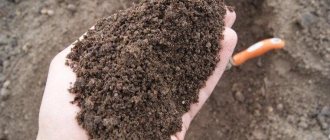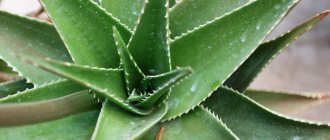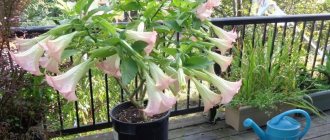Succulents that can hold water have a special structure and in our latitudes are perceived exclusively as exotic plants. This category is always treated with a little caution, especially by inexperienced gardeners. But if you want to acquire an extraordinary plant that will draw attention to itself, you can study this segment and find fairly acceptable variations. One of these is the Jatropha plant, which grows in the tropics (Africa, America).
Gardeners note its moderate care requirements and excellent survival rate in our latitudes. But this is not the main thing. After all, the plant is also multifunctional for placement in an open area, and can also become an excellent indoor decoration. This is due to the presence of a huge number of varieties. According to some sources, there are from 170 to 200 units. We invite you to take a closer look at this amazing culture.
Description
Attracted by the trunk - a bottle, it grows up to 50 cm. The plant is deciduous, i.e. in winter the stem is bare, and with the onset of spring, flower stalks appear in the form of umbrellas with small red flowers.
Jatropha flowers are bisexual and can be orange, deep pink or red. Fruits require cross pollination. Oval fruits are about 25 cm, 3-sided in shape, each with 2-3 oval seeds.
Only in summer do finger-shaped leaves of various green colors grow.
Important! “Milk” - the poisonous juice of jatropha, like all milkweeds, can burn.
Kinds
Jatropha gouty
This is the undoubted leader among all others in this family. This succulent grows as a deciduous shrub. The height of its tuberous thickened trunk, similar to a bottle, can reach a height of up to 70 centimeters. From a thick base, the trunk, rising upward, gradually narrows, sometimes even bends. But this plant is not only interesting because of its bottle-shaped trunk. It has large, up to 20 centimeters in length, thick cuttings. They are attached to the sheet almost in the center. Massive, maple-like leaves are collected at the top. The leaf plates themselves, impressively lined, reaching a diameter of 20 centimeters, create a very decorative contrast with the bottle trunk.
In spring, jatropha grows dark green, shiny leaves. With age, they become lighter and acquire a matte tint. Growing to their maximum size, they begin to darken again, filling with green paint. The underside of the leaf blade is lighter and has a grayish tint. The growing point of the leaves ends in a powerful flower brush.
In autumn, the jatropha leaves fall off, and the bottle trunk stands bare until spring. Due to the unusual shape of its trunk, jatropha is called “Buddha’s Belly”.
In March, jatropha begins to flower, and only then leaves appear. First, almost inconspicuous buds form on the peduncle umbrella. Then the peduncle begins to gradually lengthen, and buds develop along with it. And only when they reach their maximum size do they turn coral-red. Then they begin to open and turn into small stars, up to 1 centimeter in diameter. They have no smell. Jatropha can bloom for up to six months.
Jatropha Berlandieri
There is also a common type of jatropha called Jatropha Berlandieri. This is a very impressive plant. Its trunk is thick at the base, reaching 20 centimeters in diameter.
In the wild, the thickening of the trunk is hidden in the soil. Indoor jatrophas are characterized by their elevation above the ground. Jatropha Berlandieri has elongated leaf petioles and can grow up to 30 centimeters. They have a dark green color that has a silvery-gray tint. Flowers in loose inflorescences have a characteristic red-orange color. Reproduction by seeds in spring is possible.
Jatropha curcas
A very popular type of jatropha, Jatropha curcas, is interesting for its exotic originality. It has another name - Barbados nut.
It grows in the form of a powerful bush with oval leaves, pointed at the edges. The size of the leaves can be completely different; even on one bush, the size of the leaves varies from 6 to 40 centimeters.
Jatropha curcas is very original in appearance. It has light green leaves and small flowers that are bright yellow. This jatropha is not a houseplant; it is not grown at home.
Jatropha integerrima
In nature, this type of jatropha can grow up to 4 meters in height. It is a shrub with oval leaves. The inflorescences look like long racemes. Jatropha star flowers are very bright and have a characteristic burgundy hue.
Jatropha dissected
Dissected jatropha (jatropha multifida) is a rather tall spreading tree. In nature it can grow up to 3 meters in height. It has delicately carved, airy, very beautiful leaves. Their size reaches 30 centimeters in diameter and is divided into 7-11 carved parts. The base of the stem is almost hidden under the leafy mass.
Umbrella-shaped leaves with drooping, carved edges. They are a bluish-blue shade of green, and have an almost white center with light veining. Young leaves look very impressive, but gradually begin to fall off and expose the succulent trunk.
Until the dissected jatropha has time to lose its foliage, it is very similar to a palm tree. Its carved greenery attracts the eye with its perfection.
The flowers of this type of jatropha are characteristic, blood-red. They are represented by umbrella inflorescences rising above the foliage on long stalks.
In its natural environment, this jatropha can bloom all year round. At home, flowering can be observed from early spring to mid-autumn.
Flowering ends with the formation of yellow triangular fruits.
Flower care at home
Light
Jatropha loves light, but not direct sun. East and west windows are ideal. The transition to bright light and vice versa must be acclimated to the plant gradually. Also the transition to winter.
Temperature
In warm weather, jatropha prefers +18-25 degrees; in winter it should be lowered to 10-15 degrees. The plant is afraid of drafts.
Watering
Moderate watering in spring and summer, the soil should dry out. Excess water can cause the plant to rot.
The jatropha stores moisture in its trunk; it had to survive a long drought in nature. Therefore, stop watering in winter. Only start watering in the spring, when it starts to bloom.
It does not need a lot of humidity; occasionally you can wipe the leaves with a damp sponge to remove dust.
Transplantation and soil for jatropha
It is recommended to replant jatropha every 3 years, preferably in spring (summer). The pot is not needed to be deep, but it must be stable (wide), because the “bottle” has weight. It should be replanted with a clod of earth, preserving the soil around the roots.
Drainage is required: expanded clay, small stones, maybe clay shards for 1/3 of the pot. After replanting, you need to mulch the soil surface so that moisture does not evaporate, the soil is not washed out or weathered. The same materials can be used.
The soil for the plant needs to be light and loose. You can buy ready-made substrate for succulents or cacti. Mixture for jatropha: leaf soil, sand, peat and turf (2x1x1x1).
Reproduction
Jatropha can be propagated by cuttings and seeds. The first method is simpler and more accessible, so it is used more often.
Cuttings
Cuttings are carried out in the spring: strong woody shoots are cut off.
Then the following procedures are performed:
- Dry the sections until no more fluid is released.
- The cuttings are treated with a growth stimulator.
- Planted in the soil.
- Place the container with future plants in a place with a temperature of +28°C.
- A month later, after the roots appear, the young jatrophas are transplanted into a pot.
Succulents also include plants such as juncus, gymnocalycium, adenium, astrophytum, and adromiscus.
Seeds
The flower is propagated by seed as follows:
- Before planting, moisten the substrate.
- Seeds are placed on the surface. Soil is not covered.
- The container is covered with film or glass and placed in conditions with a temperature of +25°C and above, as well as bright sunlight.
- The crops are periodically sprayed with warm, settled water from a spray bottle.
- Every day the shelter is removed for some time for ventilation.
- After the sprouts appear - after about 2 weeks - the cover is removed.
- When 2 leaves appear, a pick is made.
- After the formation of 5–6 leaves, transplantation of young specimens to a permanent place is organized.
Seeds must be collected with your own hands after artificial pollination.
Experts note that germination can only be achieved from freshly harvested seeds. The soil substrate is purchased at a specialized store. The one used for planting adult jatrophas is suitable.
As containers for growing, use those that are at hand, or purchase special boxes, peat pots, tablets, and cassettes for seedlings.
Jatropha seedlings grow very quickly: after just a few months they are no longer different from adult specimens. In young plants, round leaves first form, then they become wavy. The blades appear at the age of two, and flowering begins at the same period.











